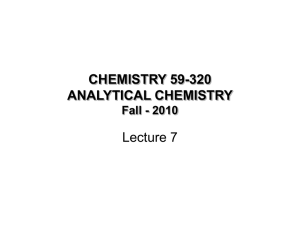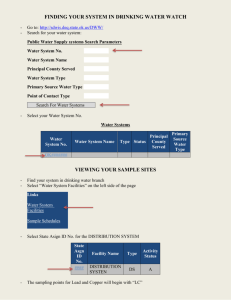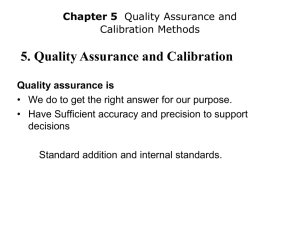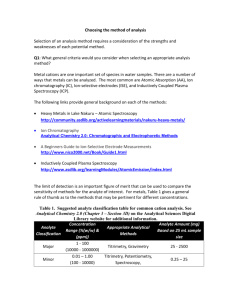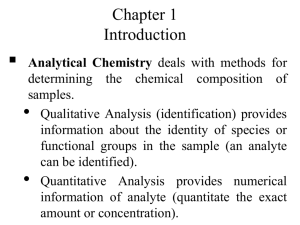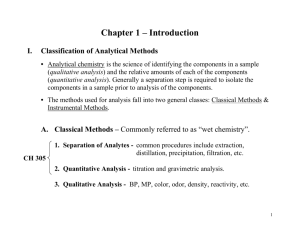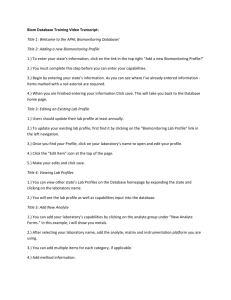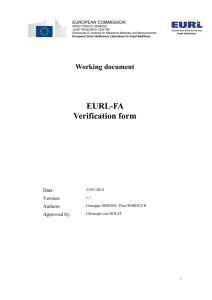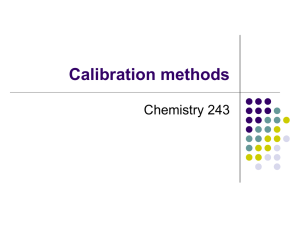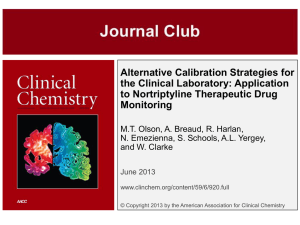Analysis of aqueous solutions II: Standard Addition techniques
advertisement
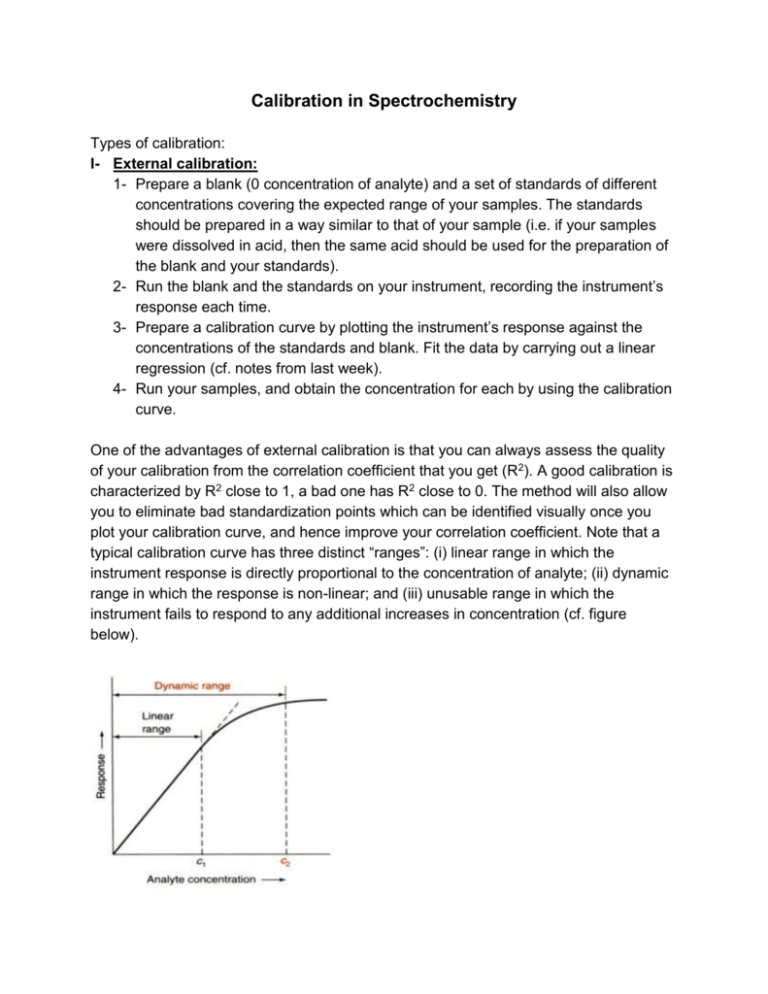
Calibration in Spectrochemistry Types of calibration: I- External calibration: 1- Prepare a blank (0 concentration of analyte) and a set of standards of different concentrations covering the expected range of your samples. The standards should be prepared in a way similar to that of your sample (i.e. if your samples were dissolved in acid, then the same acid should be used for the preparation of the blank and your standards). 2- Run the blank and the standards on your instrument, recording the instrument’s response each time. 3- Prepare a calibration curve by plotting the instrument’s response against the concentrations of the standards and blank. Fit the data by carrying out a linear regression (cf. notes from last week). 4- Run your samples, and obtain the concentration for each by using the calibration curve. One of the advantages of external calibration is that you can always assess the quality of your calibration from the correlation coefficient that you get (R2). A good calibration is characterized by R2 close to 1, a bad one has R2 close to 0. The method will also allow you to eliminate bad standardization points which can be identified visually once you plot your calibration curve, and hence improve your correlation coefficient. Note that a typical calibration curve has three distinct “ranges”: (i) linear range in which the instrument response is directly proportional to the concentration of analyte; (ii) dynamic range in which the response is non-linear; and (iii) unusable range in which the instrument fails to respond to any additional increases in concentration (cf. figure below). External calibration also allows you to calculate the detection limit of your instrument. A “signal detection limit” is given by: ydl = yblank + 3 s where ydl is the signal detection limit, and y is the instrument response for a blank (0 concentrtaion of analyte), and s is the standard deviation. On the other hand, the minimum detectable concentration (known as “detection limit, c”) is given by c = 3 s/ m where m is the slope of your calibration curve. Precautions: 1- Your standards should be as close as possible in nature to your unknown as possible to avoid/ minimize “matrix effects” 2- Avoid using the “dynamic” range of the calibration curve. Try to work within the linear range at all times. 3- Work between the upper and lower limits of your calibration standards. Avoid extrapolation in either direction. II- Standard Addition: This method is used when the sample matrix affects the instrument’s response to the analyte. The sample matrix includes anything else that might be in the sample (other cations, anions, or even molecules). 1- Place the same volume of your unknown in a number of flasks all of the same volume. 2- Add to each flask a known volume of your standard, increasing that volume from one flask to the next (see attached handout). 3- Complete all flasks to the mark with distilled water. Keep track of the dilution factor of your sample. 4- Run your flasks through the instrument, each time recording the response. 5- Plot the instrument response (I) against the concentration of your standard (CSA). Apply a linear regression, and extrapolate the regression line to where I = 0. This will be a negative value for CSA. 6- Calculate the concentration of your analyte in your unknown (Co) sample using the equation: Co = -CSA Vflask/Vunknown. For this technique to work, we assume that the sample matrix affects the added analyte in the same way as it affects the sample analyte. Also, the concentrations of the standards in each flask should be comparable to that of your unknown. On the other hand, the biggest disadvantages of this technique are (i) its relatively large errors (up to 20% rsd!), (ii) it is very time-consuming, (iii) it uses up a lot of your standard. III- Internal calibration This method involves the addition of a known quantity of some element that is chemically similar to the analyte to (a) a solution containing a known quantity of your analyte (i.e. a standard solution), and (b) to all your samples with unknown concentrations of the analyte. This method is useful when: (i) the precise sample volume analyzed is unknown – this is common in gas chromatography. In this case we assume that the response of the instrument to the internal standard is proportional to the response to the analyte. (ii) When analyte might be lost during sample preparation. In this case, we assume that losses of the internal standard are proportional to losses for the analyte. It is important that we choose an internal standard that: Does not interfere with the analysis of the analyte – does not create matrix effects. Responds similarly to the analyte – has a proportional response. Is chemically similar to the analyte – if we are doing any sample preparation. For example, if we are extracting an analyte that is an alcohol, we should use an alcohol as the internal standard. Steps: 1. Determine the ratio of the response of the unknown to the response of the internal standard. 2. Analyze a sample that contains a known amount of the analyte and the internal standard. This is your standard solution. 3. 4. 5. 6. Solve for F, the response factor. The response factor is constant for any two compounds analyzed on the same instrument. Add a known amount of internal standard to the unknown sample that contains the analyte. Analyze this solution. [X] is the only unknown quantity, so we can solve for it. Remember to account for dilutions.

